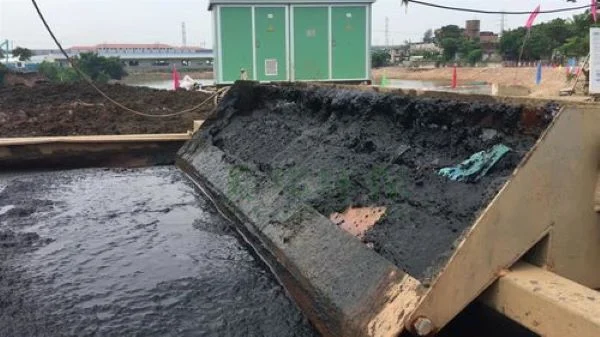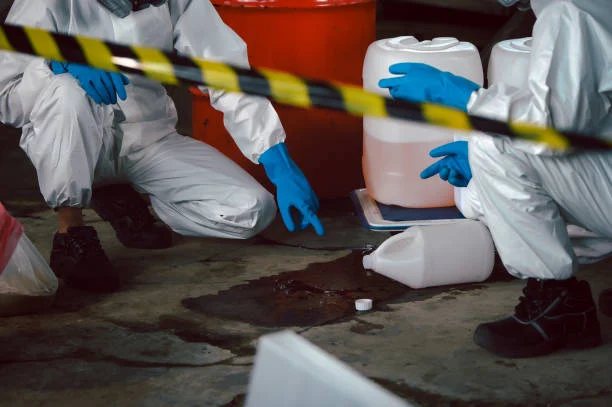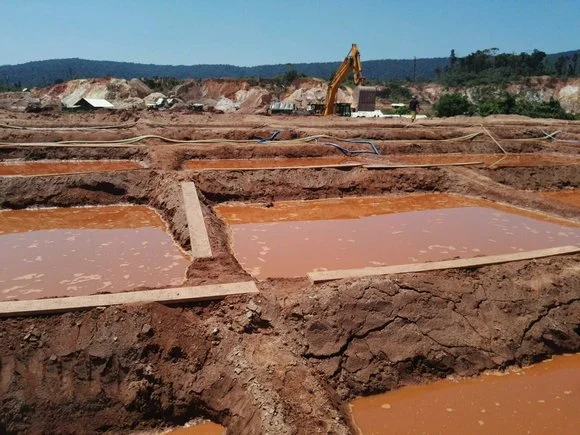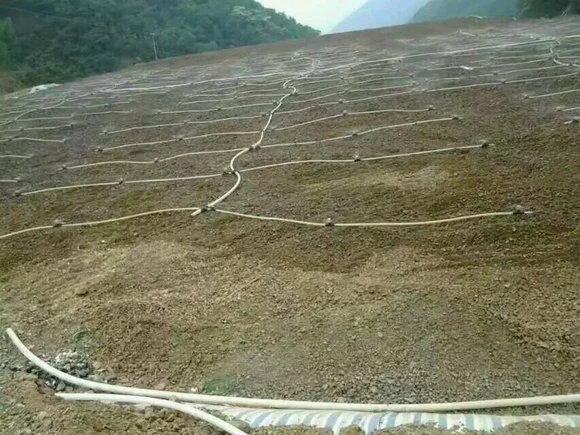
Introduction
Cyanide tailings are solid wastes generated during the beneficiation process of gold mines and other mines. Due to the presence of residual cyanides and other heavy metals, if not properly treated, they will cause great harm to the environment and human health. The high toxicity of Cyanides can spread through air, water, and soil, polluting the surrounding ecosystem and endangering the survival of animals and plants. Therefore, it is urgent to detoxify Cyanide Tailings. This article will introduce in detail the Detoxification methods and processes of cyanide tailings.
Characteristics and Hazards of Cyanide Tailings
The composition of cyanide tailings is complex. In addition to unreacted cyanides, it also contains heavy metals such as copper, lead, zinc, and MERCURY. These heavy metals are difficult to degrade in the natural environment and will accumulate over a long period. Cyanides can inhibit the activity of respiratory enzymes in biological cells, leading to the asphyxiation and death of organisms. For example, when wastewater containing cyanide tailings is discharged into rivers, it will cause a large number of deaths of aquatic organisms such as fish, destroying the water ecological balance. When heavy metals enter the human body, they will accumulate in human organs and cause various diseases. For example, lead poisoning affects the development of the nervous system, and Mercury poisoning damages the kidneys and brain.
Detoxification Methods
Chemical Oxidation Method
Alkaline Chlorination Method: This is a commonly used chemical oxidation detoxification method. Under alkaline conditions (usually the pH value is controlled at 10 - 11), oxidants such as chlorine gas or hypochlorites are added to the cyanide tailings. Its reaction principle is as follows: First, cyanide ions (CN⁻) are oxidized to cyanate ions (CNO⁻), and the reaction equation is CN⁻ + ClO⁻ + H₂O → CNO⁻ + Cl⁻ + 2H⁺. Then, cyanate is decomposed into harmless substances such as nitrogen and carbon dioxide under further oxidation, 2CNO⁻ + 3ClO⁻ + H₂O → N₂↑ + 3Cl⁻ + 2HCO₃⁻. The advantage of this method is that the reaction rate is relatively fast and the detoxification effect is obvious, but the disadvantage is that some secondary pollutants such as chlorine - containing exhaust gas may be generated.
Hydrogen Peroxide Oxidation Method: Hydrogen peroxide (H₂O₂) can oxidize and decompose cyanides in the presence of a suitable catalyst. Catalysts such as ferrous ions (Fe²⁺) are usually selected. During the reaction process, hydrogen peroxide decomposes to produce hydroxyl radicals (·OH), which have extremely strong oxidizing properties and can quickly oxidize cyanides. The reaction equation is CN⁻ + H₂O₂ → CNO⁻ + H₂O. The advantage of the hydrogen peroxide oxidation method is that the products after the decomposition of hydrogen peroxide are water and oxygen, and no new pollutants are introduced, but the cost is relatively high, and the requirements for reaction conditions are relatively strict.
Biological Oxidation Method
Microbial Leaching Method: Some special microorganisms, such as Thiobacillus ferrooxidans, are used. These microorganisms can use cyanides as nitrogen and carbon sources during their growth process and oxidize and decompose them. Through their own metabolic activities, microorganisms convert cyanides into harmless substances such as carbon dioxide, water, and ammonia. The advantage of this method is that it is environmentally friendly and has low energy consumption, but the disadvantage is that the growth of microorganisms is greatly affected by environmental factors such as temperature and pH value, and the treatment cycle is relatively long.
Biofilm Method: Microorganisms are fixed on the surface of the carrier to form a biofilm. When cyanide tailings come into contact with the biofilm, cyanides are degraded by microorganisms. The biofilm has strong adsorption and degradation capabilities, which can improve the treatment efficiency of microorganisms on cyanides. Compared with the microbial leaching method, the microorganisms in the biofilm method are not easy to lose and have higher stability, but they also face the problem of being sensitive to environmental conditions.
Other Methods
High - Temperature Pyrolysis Method: Cyanide tailings are pyrolyzed at high temperatures (usually above 800℃), and cyanides are decomposed into gases such as nitrogen and carbon monoxide. The high - temperature pyrolysis method can effectively remove cyanides, but it requires a large amount of energy consumption, and heavy metals may volatilize under high - temperature conditions, increasing the difficulty of subsequent tail gas treatment.
Adsorption Method: Adsorbents such as activated carbon and zeolite are used to adsorb cyanides. Adsorbents have a large specific surface area and can adsorb cyanides on their surfaces, thereby achieving the purpose of detoxification. The adsorption method is simple to operate, but the adsorption capacity of the adsorbent is limited, and the adsorbent needs to be replaced regularly. In addition, the treatment of the adsorbed adsorbent is also relatively complex.
Detoxification Process
Pretreatment
Crushing and Screening: The massive cyanide tailings are crushed to reduce their particle size, so that the subsequent detoxification reaction can proceed more fully. Common crushers include jaw crushers, cone crushers, etc. The crushed tailings are then screened through screening equipment such as vibrating screens to screen out particles of different particle sizes, providing materials with appropriate particle sizes for subsequent treatment.
Leaching: In order to make cyanides better contact and react with the detoxification reagent, water or other suitable solvents are usually used to leach the cyanide tailings. The leaching process is carried out in a stirred tank, and the tailings and the solvent are fully mixed by stirring. Factors such as leaching time, temperature, and liquid - to - solid ratio will affect the leaching effect, and generally need to be optimized according to actual conditions.
Detoxification Operation
Operation Process of Chemical Oxidation Method: Taking the alkaline chlorination method as an example, in the tailings solution after leaching, sodium hydroxide is first added to adjust the pH value of the solution to 10 - 11. Then, chlorine gas is slowly introduced or sodium hypochlorite solution is added, and stirring is carried out at the same time to make the reaction proceed fully. During the reaction process, the cyanide concentration in the solution needs to be monitored in real - time. When the cyanide concentration is reduced to below the specified standard, the addition of the oxidant is stopped.
Operation Process of Biological Oxidation Method: If the microbial leaching method is adopted, the well - cultured Thiobacillus ferrooxidans and other microorganisms are inoculated into the leaching solution containing cyanide tailings. The temperature of the reaction system is controlled within the suitable growth range of microorganisms (generally 25 - 35℃), and the pH value is adjusted to the appropriate range (generally 2 - 4). During the reaction process, nutrients need to be replenished regularly to meet the growth needs of microorganisms. The progress of the detoxification reaction is judged by monitoring the cyanide concentration and the growth of microorganisms.
Subsequent Treatment
Solid - Liquid Separation: After the detoxification reaction is completed, the treated tailings need to be subjected to solid - liquid separation. Common solid - liquid separation methods include filtration and centrifugation. Through filtration equipment such as plate - and - frame filter presses, the solid tailings are separated from the liquid. The separated liquid needs to be further tested for cyanide and heavy metal content to ensure that it can be discharged after meeting the discharge standards.
Tailings Disposal: After detoxification and solid - liquid separation, if the heavy metal content in the tailings is still high, further treatment is required. For example, the solidification and stabilization technology is adopted, and the tailings are mixed with solidifying agents such as cement and lime to fix the heavy metals in the solidified body and reduce their mobility in the environment. The treated tailings can be landfilled or comprehensively utilized according to actual conditions, such as being used in the production of building materials.
Conclusion
The detoxification treatment of cyanide tailings is of great significance for environmental protection and sustainable utilization of resources. Different detoxification methods have their own advantages and disadvantages. In practical applications, appropriate detoxification methods and processes need to be comprehensively selected according to factors such as the characteristics of cyanide tailings, treatment costs, and environmental requirements. At the same time, with the continuous progress of science and technology, new detoxification technologies and processes are constantly emerging. In the future, it is expected to develop more efficient, environmentally friendly, and economical detoxification methods for cyanide tailings, providing better solutions to the environmental problems brought about by cyanide tailings.
- Random Content
- Hot content
- Hot review content
- Ferrous Sulfate Industrial Grade 90%
- Feed Grade 98.0% Calcium Formate
- Gold Ore Dressing Agent Safe Gold Extracting Agent Replace Sodium Cyanide
- Adipic acid 99% used as the material of nylon 66
- Ammonium Bisulfite 70% Solution
- Sodium nitrate
- Magnesium Sulfate
- 1Discounted Sodium Cyanide (CAS: 143-33-9) for Mining - High Quality & Competitive Pricing
- 2China's New Regulations on Sodium Cyanide Exports and Guidance for International Buyers
- 3Sodium Cyanide 98% CAS 143-33-9 gold dressing agent Essential for Mining and Chemical Industries
- 4International Cyanide(Sodium cyanide) Management Code - Gold Mine Acceptance Standards
- 5China factory Sulfuric Acid 98%
- 6Anhydrous Oxalic acid 99.6% Industrial Grade
- 7Oxalic acid for mining 99.6%
- 1Sodium Cyanide 98% CAS 143-33-9 gold dressing agent Essential for Mining and Chemical Industries
- 2High Quality 99% Purity of Cyanuric chloride ISO 9001:2005 REACH Verified Producer
- 3Zinc chloride ZnCl2 for High Molecular Weight Polymers Initiator
- 4High Purity · Stable Performance · Higher Recovery — sodium cyanide for modern gold leaching
- 5High Quality Sodium Ferrocyanide / Sodium Hexacyanoferr
- 6Gold Ore Dressing Agent Safe Gold Extracting Agent Replace Sodium Cyanide
- 7Sodium Cyanide 98%+ CAS 143-33-9











Online message consultation
Add comment: